A nod to Middle Eastern flavours with this delicious salad that is super light to eat but packs an earthy punch. This Pearl Couscous Salad with Za’atar halloumi and sweet pomegranate makes a perfect weekday dinner.
Why I Love Pearl Couscous and Pomegranate Salad
As much as I love the saltiness of halloumi with crispy crust, coating it in za’atar transforms the cheese to another level by adding a dynamic earthy taste when pan-fried. The aroma of the spice blend is amazing.
And of course, who doesn’t love a good balance of halloumi and couscous?
We take strong punchy flavours of halloumi cheese and blend it with chewy pearl couscous, sweet tomatoes, crunchy pomegranate seeds, fresh mint leaves dressed in a light vinaigrette and served with cool yoghurt.
This vibrant Middle Eastern salad stands up by itself as a delicious meal.
What is Za’atar?
Wandering through my local Persian grocery store looking for pomegranate molasses, I noticed Za’atar, a spice blend.
I had tried dukkah before but not za’atar so was curious to learn more. When I could actually smell the aroma of the herbs and sesame through the packaging, my senses took over and I decided to give it a try.
Just love discovering new ingredients when least expected!
Pronounced ZAH-TAR, it originates from the Middle East and can be traced back to biblical times. Za’atar actually means thyme in Arabic but today’s most common spice blend includes thyme, roasted sesame, sumac and salt.
Some blends will also include oregano and roasted wheat. It is hard to say what the original spice blend was as many families would guard their own mix with the utmost secrecy.
I have since learnt that dukkah is more a nutty mix to include pistachios, hazelnuts and almonds blended with spices like cumin, coriander seeds and toasted sesame. Whilst za’atar is more of a herby mix.
What Does Za’atar Taste Like?
Za’atar adds a herby and earthy element to a variety of dishes. And with a touch of sumac, this concoction also gives a slight tang.
It is an incredibly versatile aromatic spice blend – you can rub onto meats or roasted vegetables, add in salad dressings, sprinkle on bread before baking or stir into yoghurt for dips.
Plus it is known to be good for health as the various herbs are rich in antioxidants. How good is that!
How Do You Cook Halloumi?
Halloumi is often served pan fried or grilled. And in this recipe, I coat it with za’atar to add extra spices before frying.
Cooking halloumi changes the texture from salty and a bit rubbery to creamy inside with strong savoury taste.
I like to pan-fry my halloumi in a large pan to get a crispy golden crust but you can also add it to a griddle pan or even over the barbeque whilst grilling meat or vegetables.
Halloumi is a quick cook – only takes 1-2 minutes on each side or until you get a crispy golden crust.
You’ve probably already noticed that I’m a massive halloumi fan.
Check out my other halloumi salad recipe creations: Roasted Beetroot Salad with Halloumi and Pomegranate Glaze, Balsamic Honey Roasted Figs and Halloumi Salad or Yellow Nectarine Salad with Grilled Halloumi.
What Is Difference Between Couscous and Pearl Couscous?
In this Middle Eastern grain salad, I have used pearl couscous (sometimes also referred to Israeli couscous) which shares a similar name to couscous but in fact they are quite different ingredients.
What do you mean?
Yes, both couscous and pearl couscous are made from semolina but the similarities end there.
Pearl couscous is shaped from semolina into tiny balls, toasted and then simmered to eat. It is more chewy in texture and has a slightly nutty taste. Generally, you can’t substitute couscous for pearl couscous so best to double check which one they are referring to!
How to Make Pearl Couscous and Pomegranate Salad
Cook the Pearl Couscous
Take 1 cup of pearl couscous and give it a rinse before cooking. In a medium saucepan, add a little olive oil, then toast the pearl couscous slightly before adding 1 ½ cups of water and simmer gently over medium heat with the lid on for about 10 minutes.
You can also use vegetable or meat stock instead of water depending on the flavour you like. I am trying to keep the flavours of the couscous light to balance out the Za’atar Halloumi savoury herby taste.
It is cooked through when the tiny balls have puffed up and the texture is al dente.
How to Grill the Halloumi
Traditionally, halloumi is made of a mixture of goat’s and sheep’s milk with a hint of mint but most brands today you will find use pasteurised cow’s milk. They do vary in texture and saltiness so best to try a few different brands to find the one you love the most.
Za’atar can be found in some major supermarkets, alternatively try your local Middle Eastern or Mediterranean grocery stores.
Cut the halloumi into thick slices and then lightly brush with olive oil. Place za’atar onto a plate and roll the cheese in so that it is evenly coated with the spice blend.
Place the halloumi in a large fry pan over medium high heat and fry for 1-2 minutes or until golden brown and then flip over to fry the other side. Remove from pan.
Prepare the Salad Ingredients
Cut the cherry tomatoes in half.
Pop the pomegranate seeds from half a pomegranate. This can be a tricky and slightly messy process. The easiest way I’ve tried is first to roll the fruit on the kitchen bench so we loosen up the seeds.
Then score the skin in the middle of the pomegranate all the way around and then twist the fruit to tear it apart. Just make sure the knife does not cut through the fruit, just scores the skin.
Then hold it cut side down over a bowl and tap the back of the fruit so the seeds start popping out into bowl. Salads with pomegranate are delicious and well worth the extra work to de-seed them.
Tear mint leaves and wash spinach leaves to prepare for assembly.
How to Make the Honey Mustard Dressing
This is very light vinaigrette, just to tie the salad ingredients together.
Mix together in a small mixing bowl the olive oil, lemon juice, wholegrain mustard, honey and salt and pepper to taste. Alternatively I find using a mason jar to shake the dressing very useful to mix it well.
Assembling the Salad
In a large mixing bowl, add pearl couscous, tomatoes, pomegranate seeds, spinach leaves, and mint and mix well. Add dressing to salad ingredients and coat well.
For this salad, I do prefer to use a shallow dinner bowl and serve individually.
Split the ingredients equally between the bowls. First pile the dressed pearl couscous salad ingredients into the bowl, then layer za’atar halloumi on top. To serve, add a generous dollop of plain Greek yoghurt on the side.
Super fresh salad topped with savoury za’atar halloumi cheese, this is a fantastic weekday dinner. Quick and tasty, I know you are going to love this.
That’s all!
More Vegetarian Salad Recipes
Get inspired by the biggest collection of salad recipes in the one place. We have recipes to suit lifestyle preferences and different occasions. These salads are both delicious and stylish. Search for your favourite ingredient to find a salad you’ll love!
- Vegan Wild Rice Salad with Puffed Quinoa and Dried Figs
- Yellow Salad with Zucchini Flowers
- Tamari Seeds and Baby Gem Lettuce Salad
- Roasted Beetroot Salad with Halloumi and Pomegranate Glaze
- Asparagus, Roasted Onion and Balsamic Tomato Salad
Easy Salad Dressing Recipes
Salad dressings are incredibly easy to make in the comfort of your own home. This way you can control the ingredients to suit your palate and you can make the exact portion you need for that one meal. Check out our collection!
- Apple Cider Vinaigrette with Orange Juice
- Mango and Lime Dressing
- Ginger, Tamarind and Plum Sauce Dressing
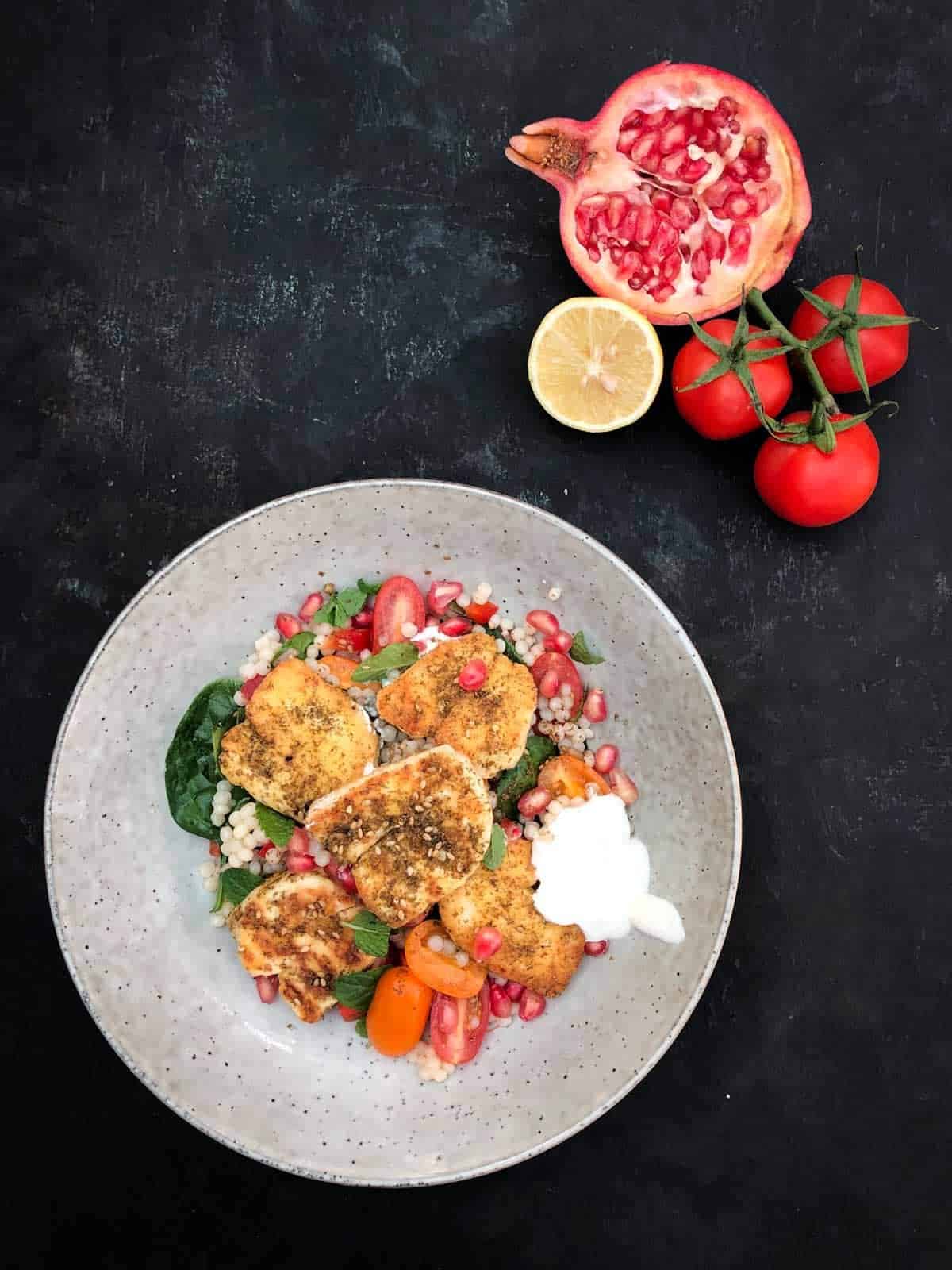
DON’T WANT TO MISS RECIPES? Click HERE to get them sent to your inbox.
Follow us on Facebook, Pinterest, Instagram and Twitter for the latest updates.
Recipe
Pearl Couscous and Pomegranate Salad
Ingredients
Salad
- 250 g halloumi cheese
- 1½ tbsp olive oil, divided
- 2 tbsp za'atar
- 1 cup pearl couscous, uncooked
- ½ pomegranate
- 100 g cherry tomatoes
- 1 cup baby spinach leaves
- ½ bunch mint
- 2 tbsp Greek yoghurt, plain
Salad Dressing
- 2 tbsp olive oil
- 2 tsp lemon juice
- 1 tbsp seeded mustard
- 1 tbsp honey
- salt, to taste
- pepper, to taste
Click on the toggle below for conversion to US Cooking Units.
Instructions
Salad
- Cut halloumi into thick slices approximately 0.5 cm and lightly brush with ½ tbsp of olive oil, then cover both sides with za’atar.
- Fry halloumi slices in a large fry pan over medium heat for approximately 1-2 minutes each side or until golden brown.
- In a medium saucepan, add 1 tbsp olive oil and gently toast the dried pearl couscous for 1-2 minutes. Then add 1 ½ cup of water and simmer in a covered pot for approximately 10 minutes. Use a fork to separate the grains and remove to cool down.
- To pop pomegranate seeds, roll the fruit to loosen the seeds. Then score the fruit in the middle and tear it in half. Over a bowl, hold the fruit face down and use a wooden spoon to tap the back of skin and squeeze the fruit a little for the seeds to pop out.
- Pick mint leaves and discard stalks.
Salad Dressing
- In a small mixing bowl, add olive oil, lemon juice, wholegrain mustard, honey, salt & pepper and whisk well together.
Assembly
- In a large mixing bowl, place pearl couscous, cherry tomatoes, pomegranate seeds, spinach leaves and mint together and mix well.
- Add the dressing to the pearl couscous salad ingredients and mix well.
- Using a dinner bowl, pile pearl couscous salad and then layer za’atar halloumi on top.
- Add a generous dollop of plain Greek yoghurt to serve.
Notes
- Za’atar can be found in Mediterranean or Middle East food stores in the spice section. If you can’t find it, try mixing dried thyme, sumac and toasted sesame to coat halloumi.
- Can substitute pomegranate seeds with dried cranberries. Still gives a great tangy taste.
- This serving is great for a side dish but can also work perfectly as an easy weekday meal for 2.
Nutrition
*Disclaimer: Nutritional information provided is an estimate only and generated by an online calculator.
Disclaimer: This site contains affiliate links to products. We may receive a commission for purchases made through these links at no additional cost to you.






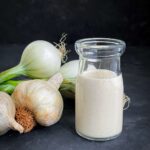







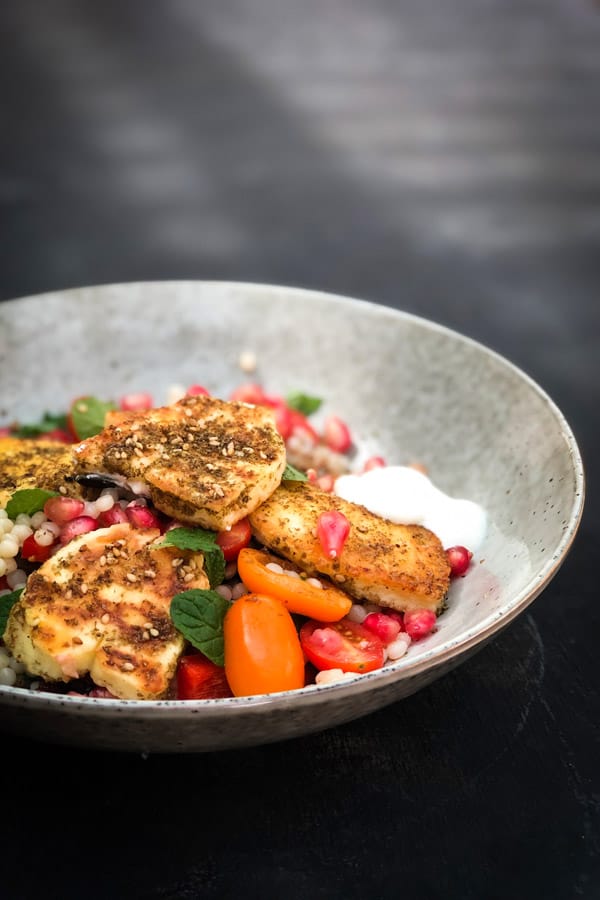
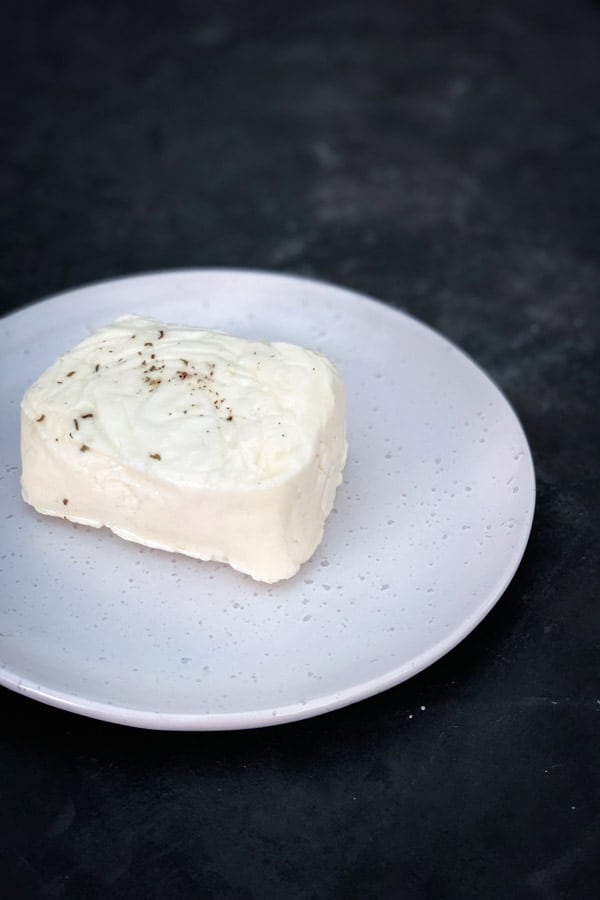
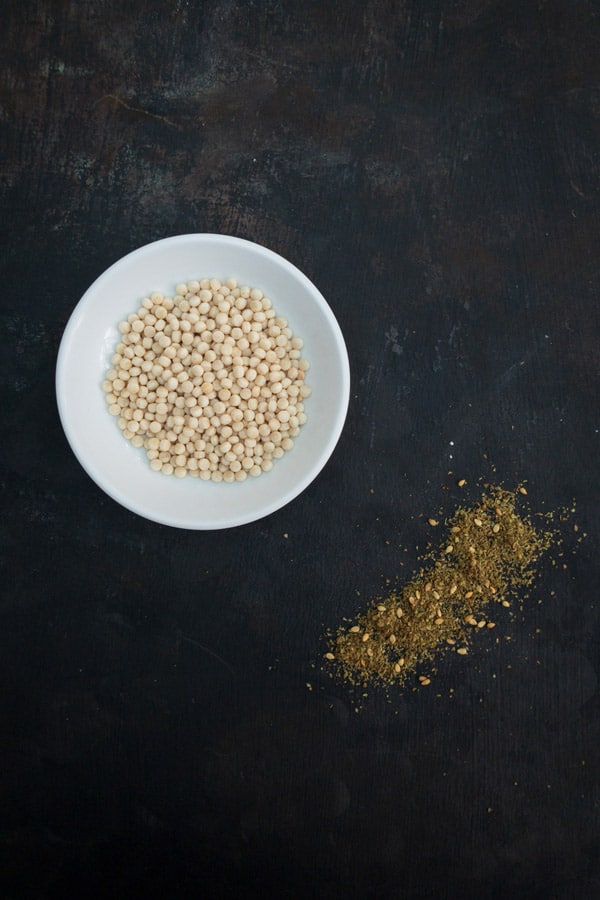
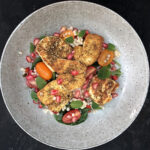
Jere
I am always looking for recipes with pearl couscous and I love what you have done with this salad. I have never used Za’atar but will definitely give this a try.
The Devil Wears Salad
Great! Glad we have a recipe that resonates. Za’atar is a wonderful Middle Eastern spice which is so versatile. You won’t regret it!
Tamara J.
This salad looks jam packed with flavor! I do not think I’ve ever had halloumi cheese.
The Devil Wears Salad
Oh Tamara, how your life will change when you taste halloumi! Give it a go!
Amanda Marie
Looks great, but sadly I was just put back on a gluten-free diet, so I can’t have the couscous! 🙁
The Devil Wears Salad
Ah bummer! But its great how there are so mamy more coeliac friendly options out there now compared to the years gone by. You could substitute the couscous with rice.
Lesli
I love halloumi cheese and pearl couscous! This salad has to be on my menu this week! Love it!
The Devil Wears Salad
Fantastic! How did you go Lesli? We would love any feedback you may have for us:)
Seanna
Really love learning about spices and techniques new to me and appreciate the informational style of your writing. Looking forward to trying this recipe!
The Devil Wears Salad
Thank you Seanna! We’re glad to hear that you found the information useful. Do check back in after you’ve made this salad. We’d love to know if you enjoyed it!